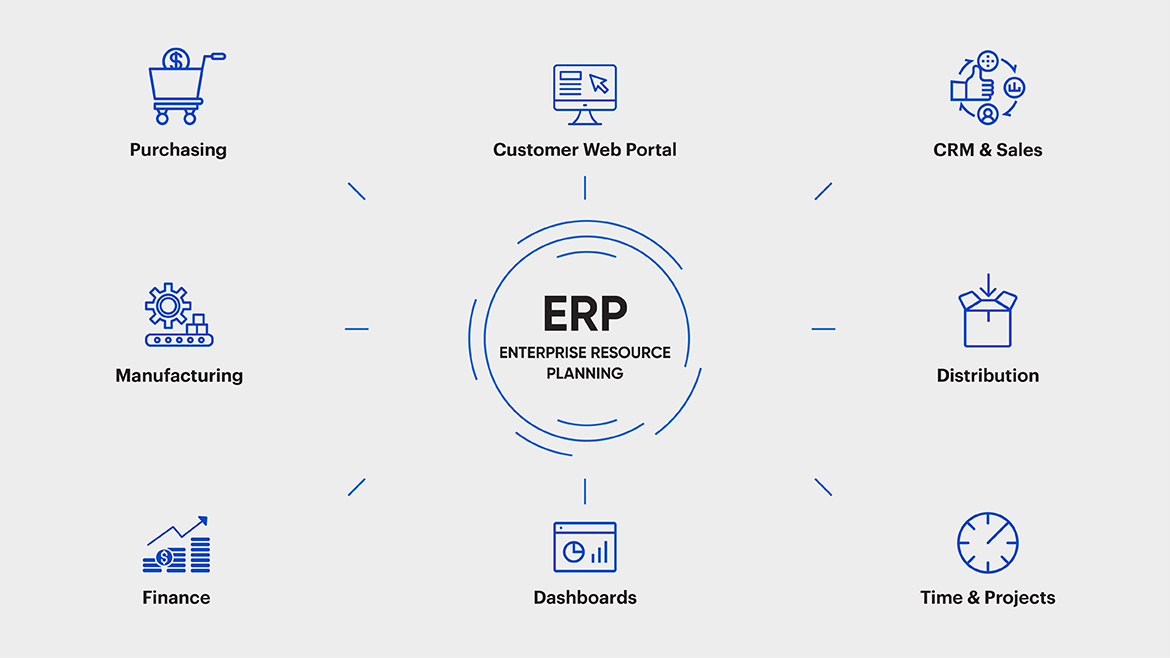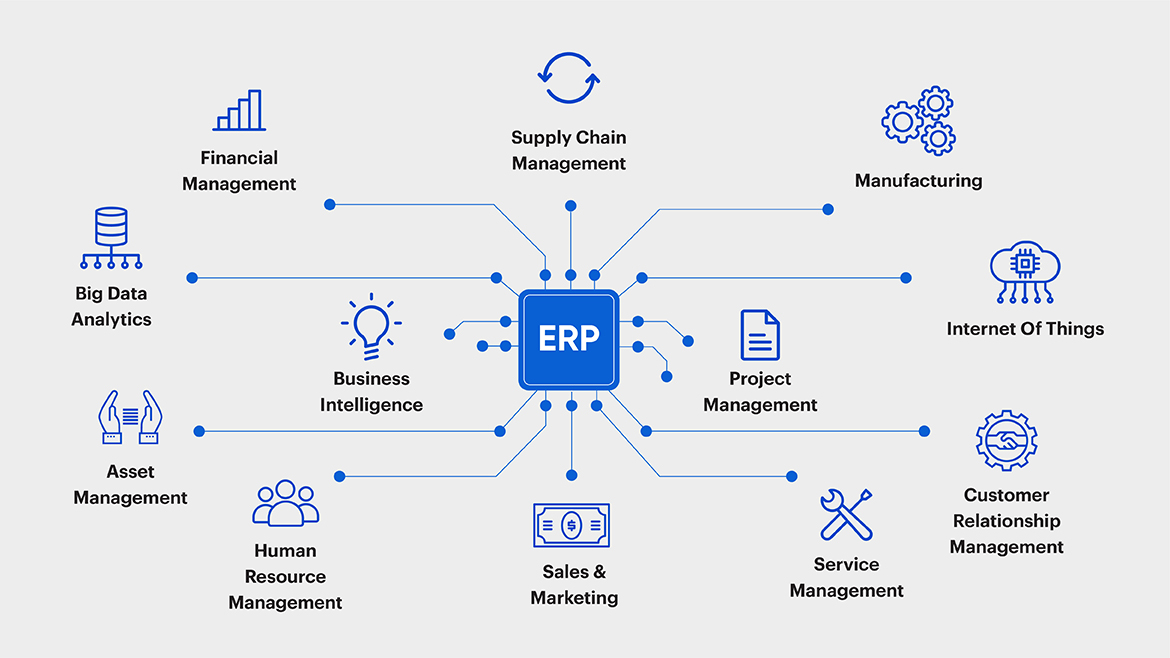Digital transformation is incurring strongly in the last few years. However, due to the impact of the Covid-19 pandemic, businesses seem to restructure their production and business goals to consider key targets. One question is raised on whether core systems, especially ERP systems, should implement or upgrade, change in digital strategy
What is ERP?
ERP (stands for “Enterprise Resource Planning”) is a software that integrates many modules to serve different departments and inter-department business processes.
ERP supports businesses in collecting, processing and distributing data efficiently, consistently, avoiding duplication and in a timely manner, to meet overall management requirements. The ERP system provides a homogeneous picture from sales, procurement, inventory, materials, production, human resources, salary… and can be applied to various size of companies from small firms to multinational corporations.

At the current stage, the number of enterprises implementing ERP in Vietnam remains insignificant. According to unofficial statistics from ERP software suppliers, the total number of large enterprises in Vietnam that have implemented ERP is approximately 300, the number of enterprises using integrated cloud-based accounting software or multi-function software (software tends to look like ERP) is at a few thousand, while the number of businesses operating in Vietnam has reached millions.
Most of the businesses that apply ERP are actually big enterprises; meanwhile, in the majority of small businesses opting for more functional online software platforms.
Investment trends in digital transformation have experienced a big shift during the Covid-19 pandemic. Businesses focus more on operations and business through remote working and online connecting platforms. Therefore, formerly invested ERP systems seem to face more difficulties in the process of administration and operation.
In addition, the fact that the IT infrastructure is designed for businesses to be closed within internal network infrastructure only serving on-site operations (off-line) also makes it difficult for businesses to operate ERP systems remotely.
ERP model role in the digital transformation strategy of enterprises
The role of the ERP system shall be undeniable in the core systems of businesses, when the financial position of the business is required to be fully updated and linked to all stages, from sales to collecting receivables, from purchases to payments, from production to delivery and maintenance… Therefore, the inclusion of an ERP solution in the digital transformation plan is definitely one of the key tasks that need to be done.
The question is, for businesses that have not yet applied or businesses that have applied and implemented ERP, how should this be done?
For businesses that have yet to implement the ERP system, it is necessary to define a strategy on the IT platform roadmap, in which, enterprises need to clearly define the core systems that will be put into use in accordance with its short-term and medium-term strategy, and simultaneously set priorities in terms of budget and implementation time that are reasonable.
If businesses are not really confident and in need of a methodology, they should hire professional consulting units to design the roadmap methodically. On the other hand, the core software system of the enterprise will also be closely tied to the ERP system and data management platform at the lower layer. Therefore, enterprises need to clearly define the business model to define the value chains and from there determine the requirements for the ERP system to be established appropriately.

For enterprises that have applied ERP, it is necessary to re-evaluate factors: age of technology, ease of application, operating and exploitation habits, ability to integrate with other systems. The assessment report should clearly indicate the internal limitations of the ERP system as well as identify the differences between the current system and the processes of the new future value chain according to the medium-term strategy of the enterprise.
In addition, elements of remote system operation, building automatic data entry robots, integration with online business and administration support systems such as e-invoices, e-contracts, etc. or electronic, digital signature, electronic approval… or business and communication platforms on various channels such as e-commerce platforms, commerce on social networking platforms, applications on handheld devices (mobility)… are factors that need to be carefully considered when analyzing the current status and identifying opportunities for system improvement and upgradation.
The former traditional ERP model has gradually changed and become more intelligent. The concept of “autonomous ERP” – ERP that operates automatically is gradually becoming a new trend when it is invested by leading technology companies such as SAP, Oracle, Microsoft…
Furthermore, the efficient exploitation and use of data on the big-data storage and analysis platform may also give businesses deeper and faster insights, along with an in-depth analysis model (data analytic) and combined with artificial intelligence (AI) to create forecasting methods for production, business and operation activities.
The ERP system plays a fundamental and important role in structuring and standardizing cross-departmental data to reflect the financial structures of the business. Therefore, continuing to put the ERP system in place for deployment or evaluation and upgrading is one of the necessary and important tasks in building a digital transformation roadmap.
In short, with the strong development of technology, core software such as ERP system also has significant advancements, adding more value to businesses. However, the investment in these core systems is not a short-term goal but it shall be determined in the medium and long-term strategies, requiring a methodical investment, and it would be better if professional consultants reviewed and approved the strategy.
In particular, businesses facing difficulties as a result of the Covid pandemic can consider and set deployment priorities in a manner consistent with their current status, as well as strategic goals to implement and utilize the ERP system effectively.





